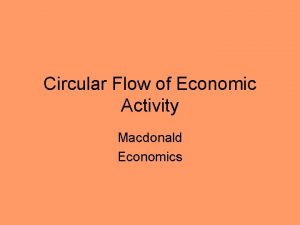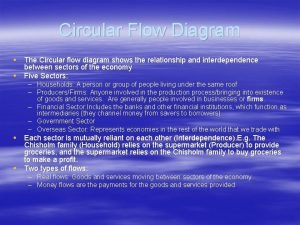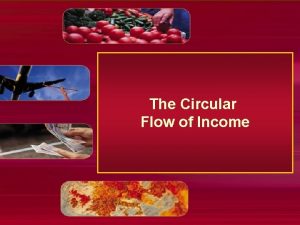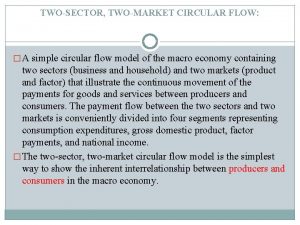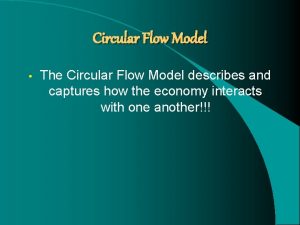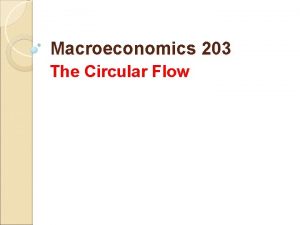Circular Flow ECONOMICS Warmup Circular Flow The circular








- Slides: 8

Circular Flow ECONOMICS

Warm-up

Circular Flow The circular flow model is how economists describe how voluntary exchanges between households and businesses answer the economy’s questions of WHAT? WHO? and HOW? The circular flow model also show the necessary flow of money, products, and resources that help to satisfy human wants

Circular Flow Diagram

Explaining the Circular Flow Diagram What is a market? A location or other mechanism that allows buyers and sellers to exchange a certain economic product Factor Markets This is where companies get the things they need to run their businesses Labor, Land, Borrowed Money, Materials Product Markets These are the places where people spend the money they make at work

Goods and Services What is a good? A good is an item that is economically useful or satisfies an economic want Consumer goods A good that is intended for final use by individuals Capital goods These are raw goods used to produce other goods i. e. Saw to make lumber, a computer chip to be placed in computer Service A work that is performed for someone, by someone else i. e. exterminator, restaurant worker etc.

What is it worth? Value The value of an object refers to a worth that can be expressed in dollars and cents. Paradox of Value The paradox of value is where a necessity (food) has a lower value than a non-necessity (ipod) Why do we pay more for non-necessities than we do for things we really need? (think to a concept we talked about in the first lesson)

What exactly do you want me to do? Division of Labor This is the concept where workers are responsible for performing fewer tasks than they were required to do before Instead of constructing an entire car, you instead only install seats Specialization When factors of production perform tasks that they can do relatively more efficiently than others Translation: When you do something multiple times, you become faster at performing that action










